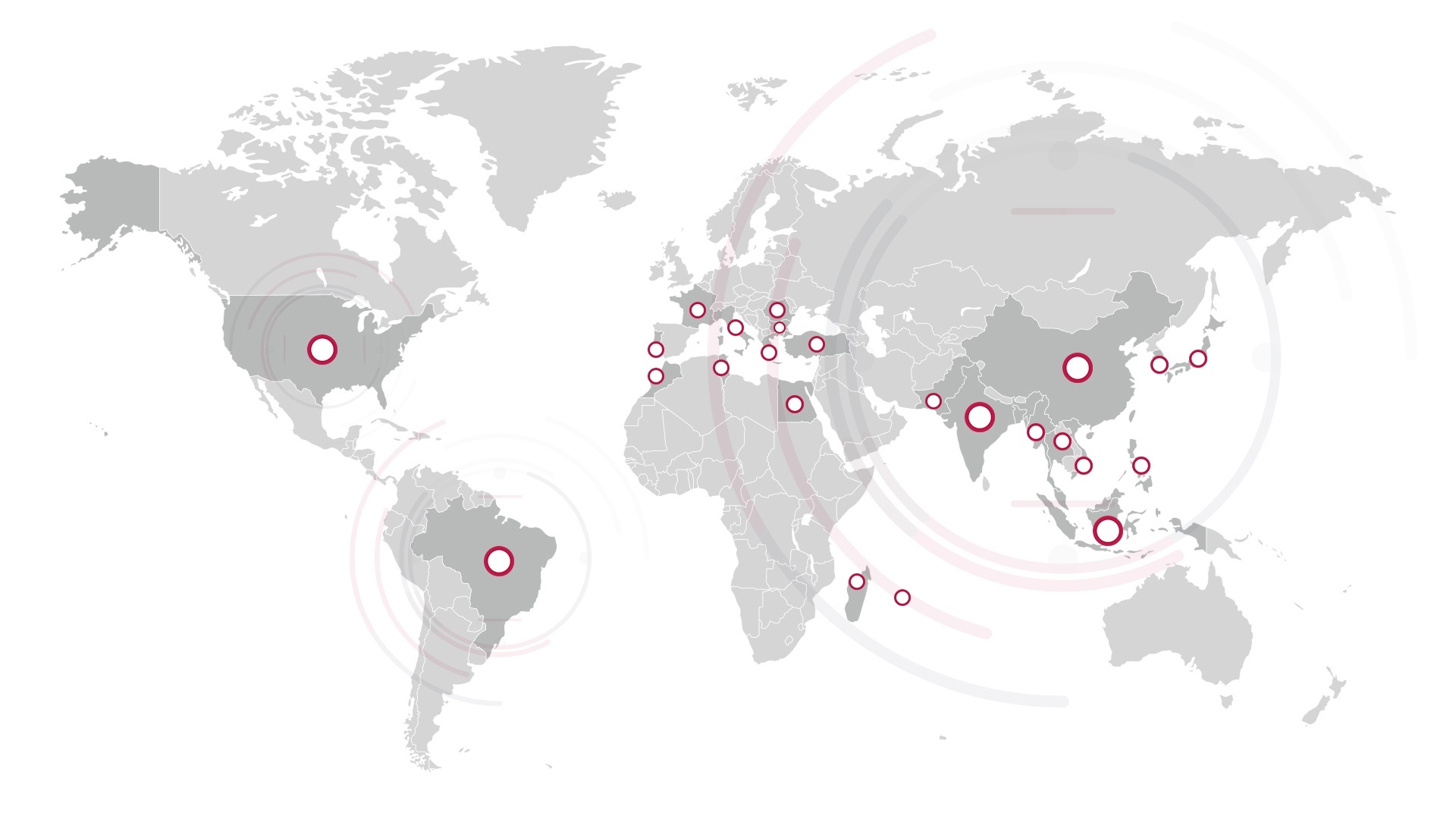An incredible 24.3 billion pairs of shoes were produced in 2019, with nearly 90% manufactured in Asia. But while footwear is a necessary fashion feature of every wardrobe, styles and quantities vary: in 2019, North Americans bought 5.6 pairs of shoes on average, those in Europe and Oceania purchased 4.4 pairs, and people in Asia bought 2.6 pairs1.
In the complex footwear industry, four key challenges have emerged in the current climate. Our footwear experts have developed solutions to these issues that ensure smooth and sustainable production of long-lasting products that customers trust.
1. Quality of raw materials
With materials the most important feature of footwear, it’s unsurprising that raw materials can account for up to 50% of the root cause of quality issues2.
The most common materials used to make shoes are imported leather hides and skins, textiles, plastic polymers, and rubber.
Defects found during inspections by SgT footwear technicians often include:
- fabric holes and tears,
- bubbling in the sole from poor-quality polymers,
- color variations within the same material batches,
- dirt, stains, and abrasion marks,
- uneven dyeing, printing, and dye marks, and
- leather-specific defects, such as scratches, veins, growth marks, and looseness.
Cheaper materials can also mean inferior quality, which can negatively impact the production process.
2. Poor workmanship and time pressures
Other defects frequently discovered by SgT’s textile technicians are:
- excess of adhesives: glue, wax, or oil
- abrasion marks
- degumming or weak cementing
- asymmetry
- shoe size difference, and
- sharp protruding objects (e.g. nails).
There are several reasons why these issues occur. Producing footwear is heavily labor-intensive, leading to human errors. Some factories lack the expertise to manufacture footwear, with certain constructions not yet mastered by the factory. The production may also have been rushed to meet tight shipping deadlines.
3. Meeting consumers’ multifaceted expectations
In the competitive footwear market, brands must offer the highest value to consumers. Style, fit, and comfort remain top-of-mind purchasing decisions, but longevity, function, and versatility also play a role. In the last several years, the hybrid style of athleisure has continued to gain traction in this market.
Creating the right fit is vital, with customers expecting to receive shoes that are identically sized and with the correct dimensions. More than desiring comfort, buyers have become aware that incorrectly fitted footwear can lead to painful foot pathologies and disorders. But ensuring a good fit has become more challenging than ever in the e-commerce era, with increasing numbers of shoes being ordered online.
4. The environmental footprint of making shoes
The rise of eco-conscious consumerism has placed the clothing industry under public scrutiny for its energy-intensive processes.
Agriculture itself represents 40% of the footwear life cycle impact, being the main factor responsible for global warming3. The numerous materials and manufacturing phases also provide an important challenge for shoe brands as it is responsible for around 90% of the total environmental impacts occurring during the entire life cycle3. For example, a typical pair of running shoes comprises 65 parts that take more than 360 steps to assemble, from sewing and cutting to injection molding, foaming, and heating4.
Some of the environmental impacts of manufacturing shoes are:
- Machinery and chemicals requiring large quantities of fossil fuels that produce greenhouse gases when burned. According to research from MIT, the production of a single shoe produces 30 pounds of carbon dioxide on average—the equivalent to keeping a 100-watt light bulb on for one week5.
- Numerous chemical adhesives and tanning chemicals that are used to process different shoe components. These are easily leaked into water sources and the environment when discharged from factories.
- The production of solid waste, mostly from cutting. This is commonly seen with leather, a natural product susceptible to flaws with no uniform properties, making it more prone to waste than synthetic materials.
Specialist textile quality solutions for footwear
Through its global network of experts, SgT offers a complete range of solutions that help secure quality, safety, performance, and sustainability for all footwear products and processes. These include:
- Footwear inspections: raw materials, semi-finished goods, and finished goods.
- Footwear technical audits: risk-based assessments and mold prevention at tanneries, mills, manufacturing units, and warehouses.
- Footwear lab testing: physical, mechanical, and chemical.
- Footwear technical support: assistance to development and fit assessments.
- Footwear sustainability: CSR audits, environmental and chemical assessments of manufacturing processes, life-cycle assessments, product carbon footprints, and more.
Would you like to improve your footwear products and processes?
Contact our footwear quality experts today
Sources:
2. data collected from SgT’s inspections
4. Footwear’s (carbon) footprint: Bulk of shoes’ carbon footprint comes from manufacturing processes
5. MIT News



